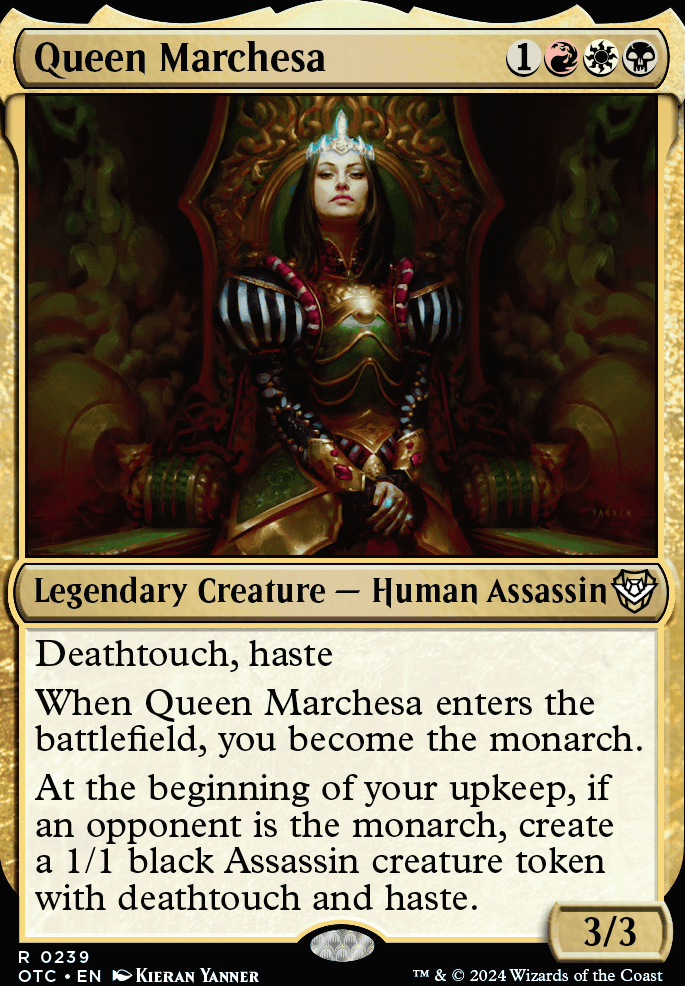Land (37)
- 1x Arcane Lighthouse
- 1x Ash Barrens
- 1x Battlefield Forge
- 1x Blood Crypt
- 1x Caves of Koilos
- 1x Clifftop Retreat
- 1x Command Tower
- 1x Evolving Wilds
- 1x Field of Ruin
- 1x Foreboding Ruins
- 1x Ghost Quarter
- 1x Glacial Chasm
- 1x Godless Shrine
- 1x Graven Cairns
- 1x Hall of Heliod's Generosity
- 2x Mountain
- 1x Path of Ancestry
- 2x Plains
- 1x Reliquary Tower
- 1x Rogue's Passage
- 1x Sacred Foundry
- 1x Scavenger Grounds
- 1x Shadowblood Ridge
- 1x Silent Clearing
- 1x Sunbaked Canyon
- 3x Swamp
- 1x Tainted Field
- 1x Tainted Peak
- 1x Temple of Malice
- 1x Temple of Silence
- 1x Temple of Triumph
- 1x Terramorphic Expanse
- 1x Thespian's Stage
Instant (17)
- 1x Backlash
- 1x Boros Charm
- 1x Chaos Warp
- 1x Comeuppance
- 1x Dawn Charm
- 1x Deflecting Palm
- 1x Enlightened Tutor
- 1x Generous Gift
- 1x Heliod's Intervention
- 1x Master Warcraft
- 1x Path to Exile
- 1x Rakdos Charm
- 1x Rebuff the Wicked
- 1x Reverberate
- 1x Thrill of Possibility
- 1x Wear / Tear
Creature (14)
- 1x Azra Oddsmaker
- 1x Bruse Tarl, Boorish Herder
- 1x Dire Fleet Daredevil
- 1x Dockside Extortionist
- 1x Dragonmaster Outcast
- 1x Dualcaster Mage
- 1x Gisela, Blade of Goldnight
- 1x Kambal, Consul of Allocation
- 1x Master of Cruelties
- 1x Mother of Runes
- 1x Ranger-Captain of Eos
- 1x Selfless Squire
- 1x Serra Ascendant
- 1x Thorn of the Black Rose
Sorcery (8)
Commander (1)
Artifact (14)
- 1x Arcane Signet
- 1x Boros Signet
- 1x Key to the City
- 1x Mirage Mirror
- 1x Norn's Annex
- 1x Orzhov Signet
- 1x Rakdos Signet
- 1x Skullclamp
- 1x Sol Ring
- 1x Sunforger
- 1x Talisman of Conviction
- 1x Talisman of Hierarchy
- 1x Talisman of Indulgence
- 1x Thaumatic Compass Flip
Enchantment (9)
Suggestions
Updates Add
Comments
Attention! Complete Comment Tutorial! This annoying message will go away once you do!
Important! Formatting tips — Comment Tutorial — markdown syntax
Please login to comment
93% Casual
Competitive
| Date added | 3 years |
| Last updated | 3 years |
| Legality | This deck is Commander / EDH legal. |
| Rarity (main - side) | 6 - 0 Mythic Rares 49 - 0 Rares 26 - 0 Uncommons 12 - 0 Commons |
| Cards | 100 |
| Avg. CMC | 2.75 |
| Tokens | Assassin 1/1 B w/ Haste, Dragon 5/5 R, Elephant 3/3 G, The Monarch, Treasure |
| Votes | |
| Ignored suggestions | |
| Shared with | |
| Views |

